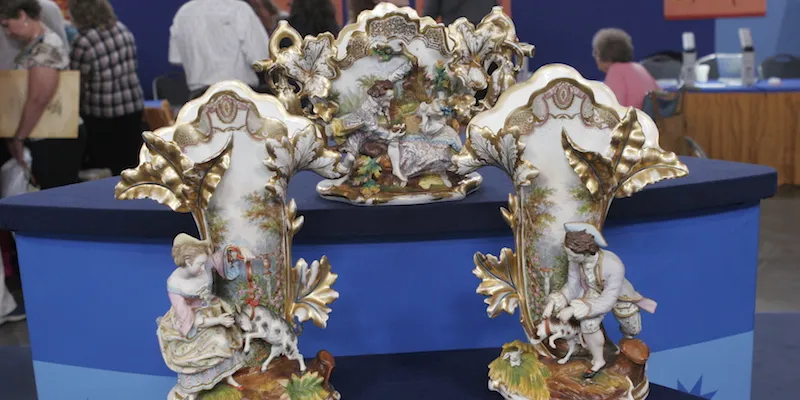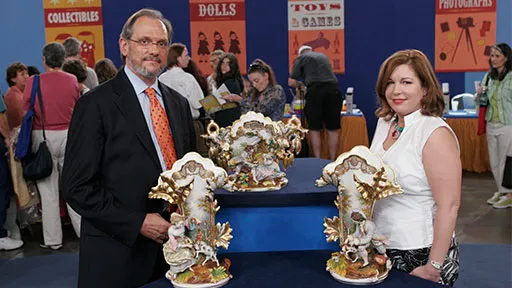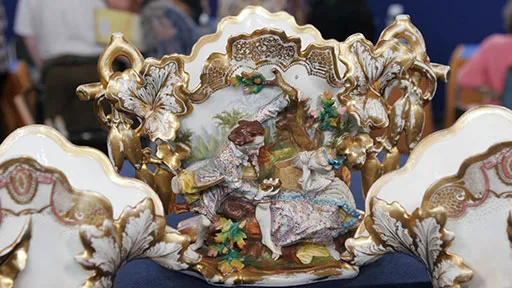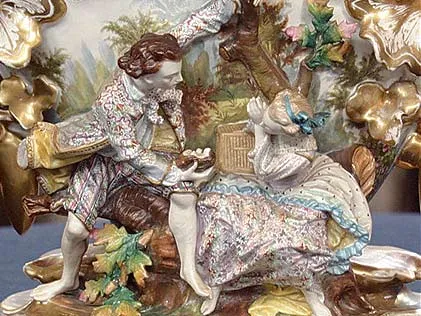What's the Word: Garniture?
Appraiser David Lackey spotted a ceramic "garniture" in Houston—but what is that?

Feb 13, 2006
At the Houston ANTIQUES ROADSHOW, ceramics expert David Lackey appraised what looked like a set of three ornate ceramic figurines that depicted well-dressed Frenchmen and women courting in the countryside. He identified the set as "old Paris porcelain," unusual in that it had areas that were glazed and others that were unglazed.

This set of ornate figurines is an example of a garniture... Decorative, to be sure.
"They were probably bought new to go together as a garniture," David said. "And they're enough alike that today they should stay together as a garniture."
But what is a garniture? "I haven't looked it up, but I'll tell you the common definition in the field," David said. "It's a group of decorative objects made as a set to be prominently displayed on something like a mantel or a buffet table."

Unusually, this old Paris porcelain has some areas that are unglazed.
That's close to a dictionary definition—but because of his experience buying and selling garnitures, David knows much more about them. The Chinese first created export porcelain garnitures, and European porcelain makers copied the idea in the porcelain they fired in the Meissen factory near Dresden, Delftware made in Holland and England, and Paris porcelain in France. Garniture elements were often sold individually or in sets—the latter a purchasing habit that retailers always tried to encourage.

This scene depicts men and women frolicking in the countryside.
And David notes that they were never made in sets of twos, fours, or sixes. "They always come in odd numbers," he says. "There's always three, five, or seven, with a central element flanked by pairs." The centerpiece might be a clock, for example, surrounded by pairs of urns, candlesticks or vases—common objects in any garniture.
Garnitures went out of fashion in the 20th century, so most of the garnitures have survived from the 19th or even the 18th century. "It's very rare to find a garniture all together any more," David says, noting that many sets have been divvied up in estates and ruined when one of the pieces is broken. "And when you do find a set, they sell for a premium."
Dennis Gaffney is a freelance writer in Albany, New York. He has been a contributor to Antiques Roadshow Online since 1998.


